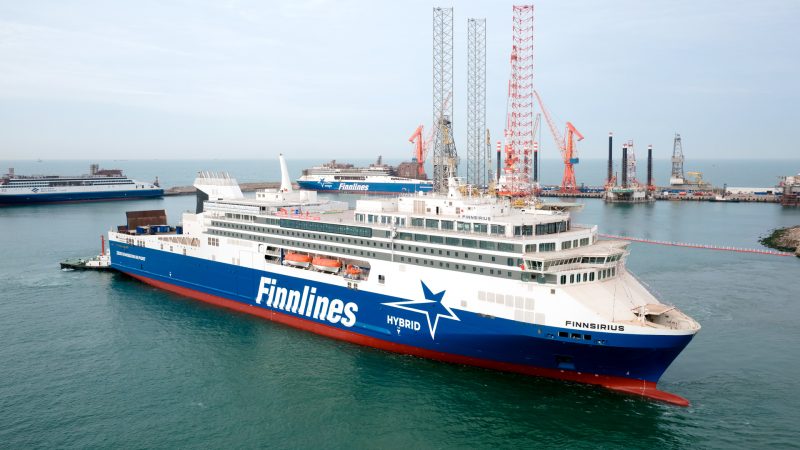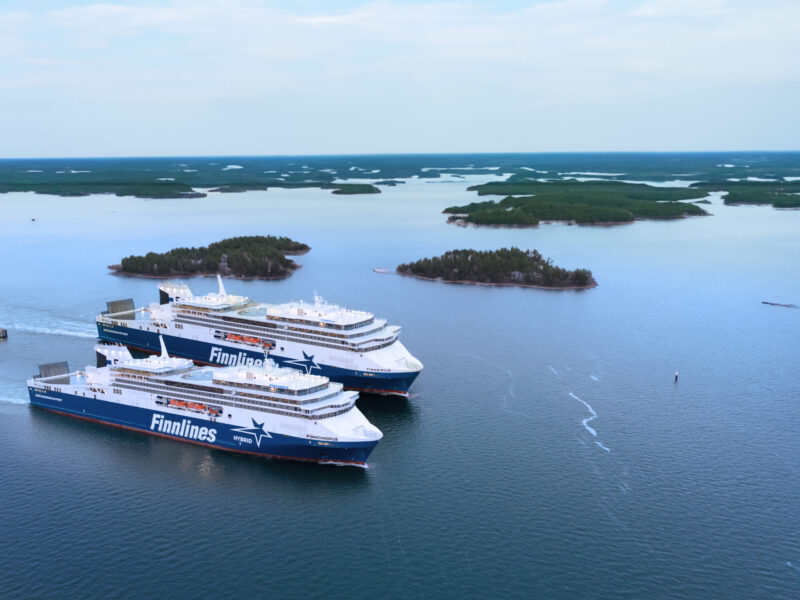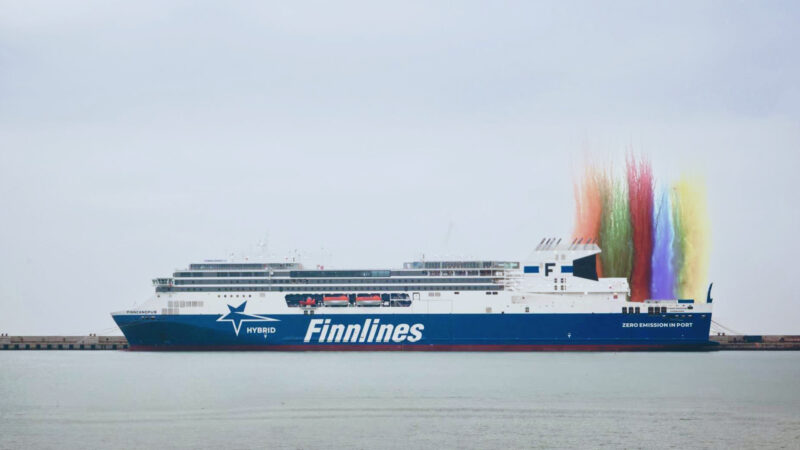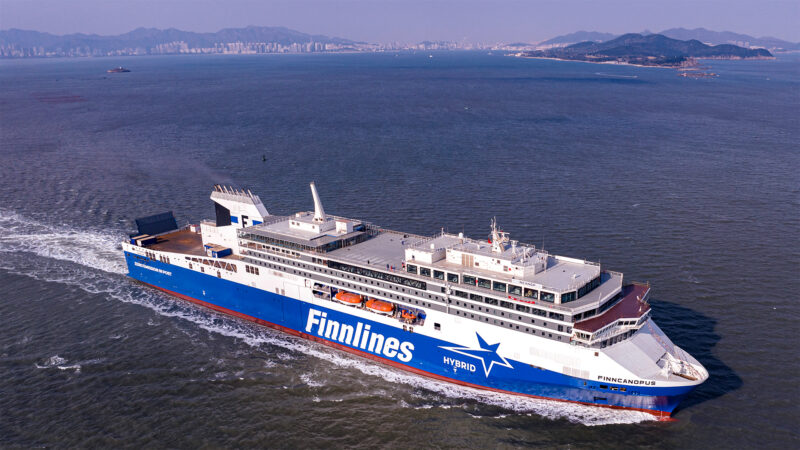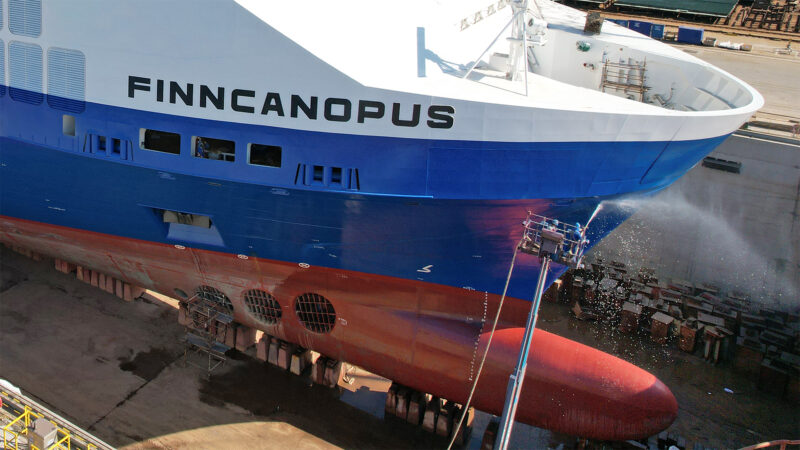A Forklift Rally and Laboratory Tests – This Is How the Inclining Test Was Executed
Some exciting moments were experienced on Finnsirius when three hundred and sixty tons of iron were loaded onto her deck. The extra weight was easily supported by the Superstar vessel, but the resulting list served an important purpose.
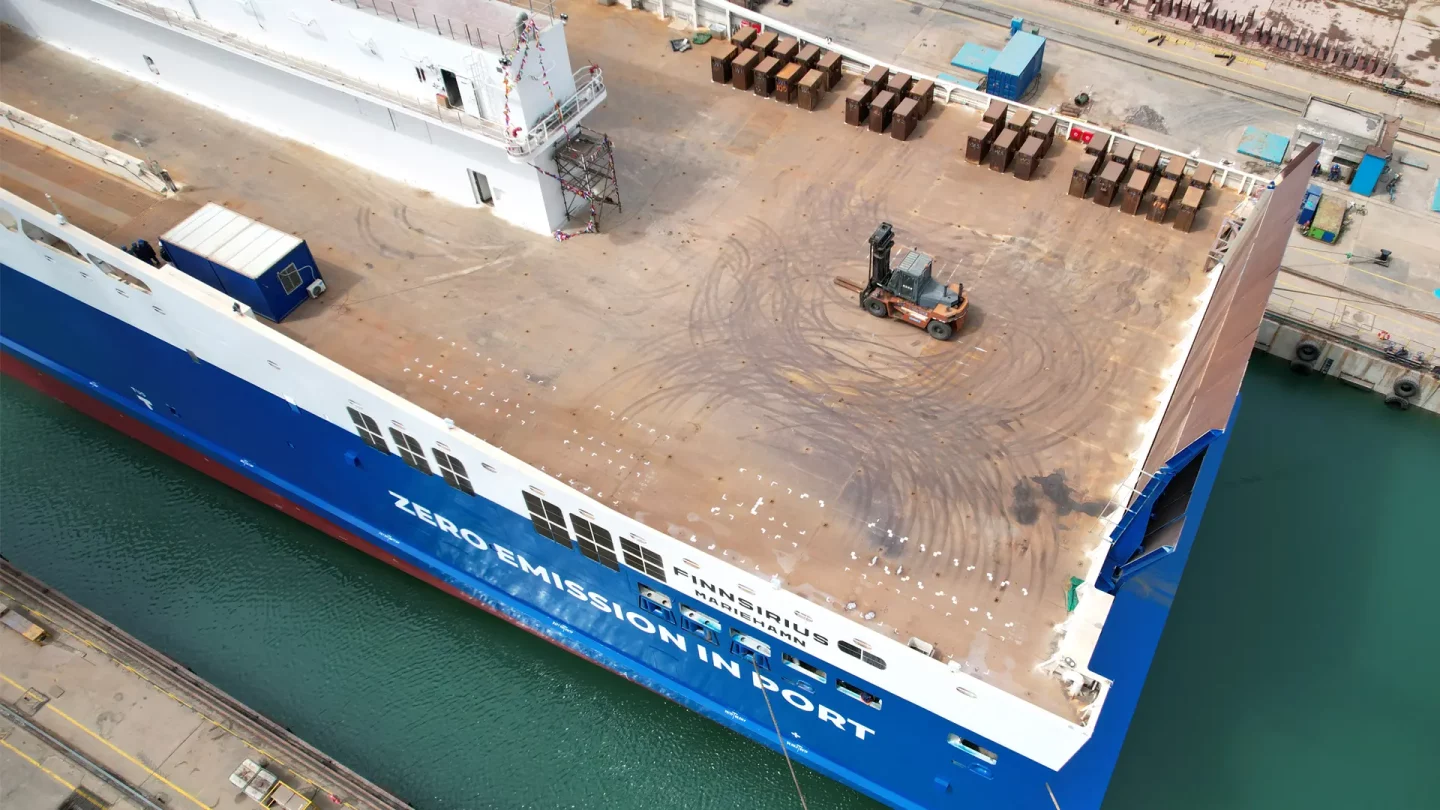
The inclining test is an important milestone towards the end of the work on the new ship at the shipyard. The inclining test determines the ship’s light weight and center of gravity. The pictures illustrate how the inclining test was conducted on Finnsirius at the Weihai shipyard.
Wash and Makeup, Please
Finnsirius was launched in August 2022 and this first Superstar vessel in the series of siblings has floated on its own in seawater ever since. Nine months of hard work done, during which time the construction of the engine, deck and service departments progressed by leaps and bounds. The main engines of Finnsirius were started for the first time in February, and dock tests continued well into spring. The sea test drive loomed ahead, so the new ship had to undergo an inclining test. Before the test, Finnsirius revisited the dry dock, where its underwater parts were inspected, washed, and finished.
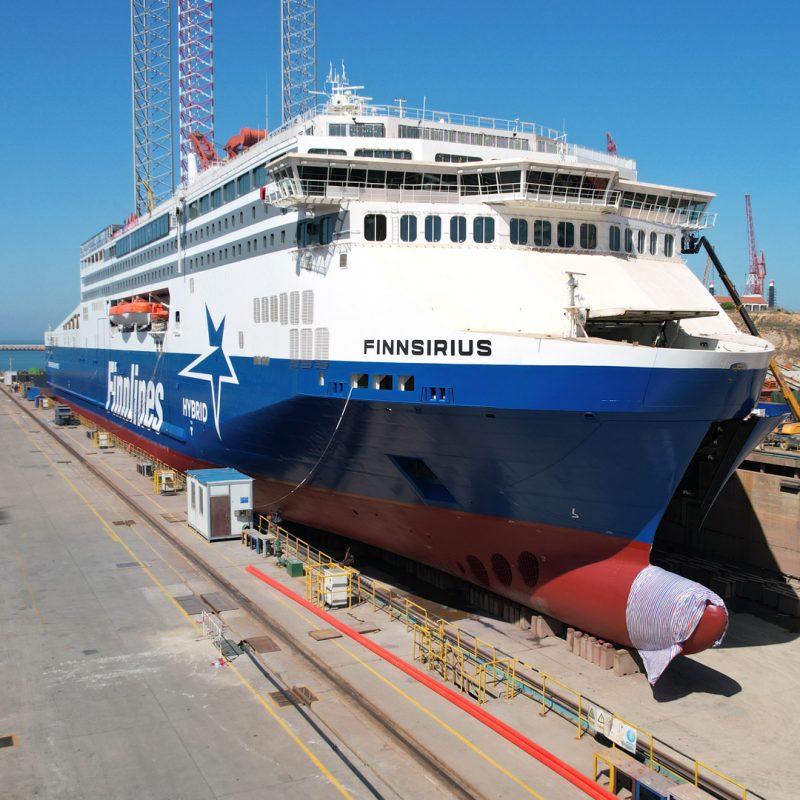
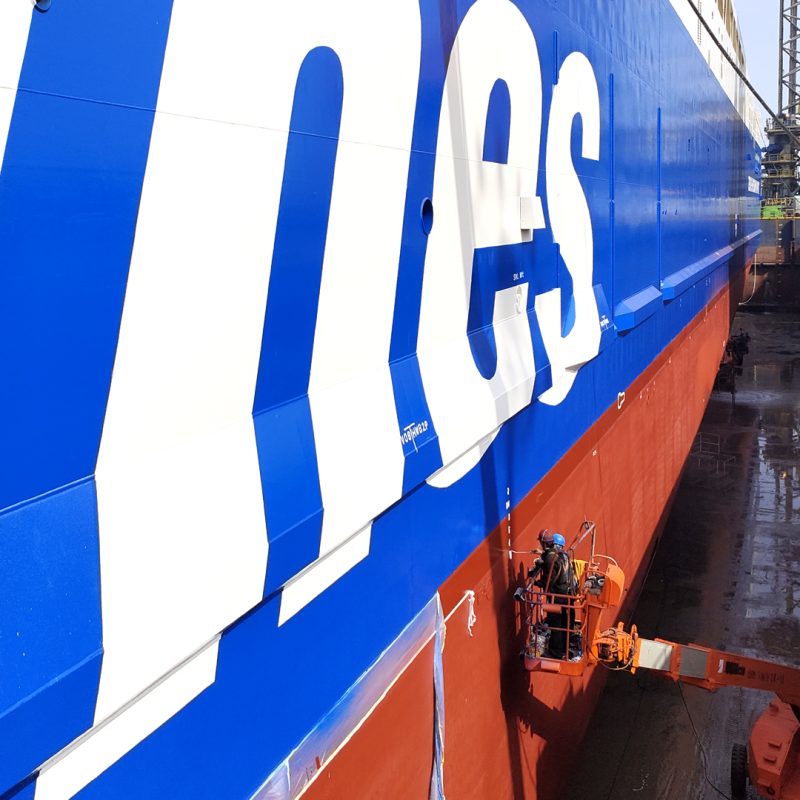
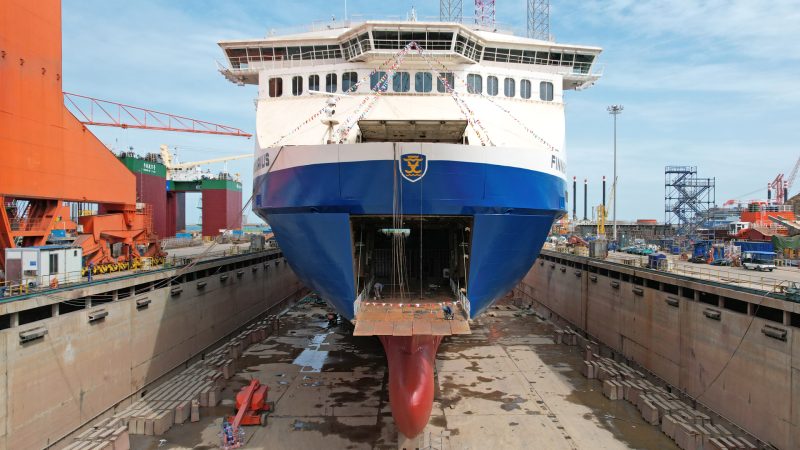
Wet again: The Inclining Test
When the paint was retouched and the bottom of the ship inspected, the dock pool was filled with water: Finnsirius floated again. The maximum draft of Finnsirius is 7.1 meters, but as it was empty and there was no cargo it did not swim that deep. While floating in the pool, Finnsirius looked as if it was floating in the air – despite the fact that it had just been loaded with 360 tons of the test load needed for the inclining test.
The purpose of the inclining test is to determine issues related to the ship’s load-bearing capacity and stability. Despite the implications one might infer from the term ‘inclining test’, the intention is not to test the vessel’s tolerance for listing.
The weather was pleasant on the day of the inclining test: calm and dry. The conditions during the experiment were measured and documented. The temperature of the seawater and its density were measured. The locations of the test loads were determined at the aft of deck 7 on Finnsirius on both the port and starboard sides. Three plumb lines used as measuring instruments were attached to the roof of the car deck. The sufficient list required for the test was achieved by moving the inclining weights from one side to the other. The weights were moved with a forklift. The height of the center of gravity from the bottom of the ship was calculated from the heeling angle. The abeam and longitudinal position of the center of gravity as well as the light weight, i.e. the weight without cargo and provision, of the ship were obtained as a result of the inclining test.
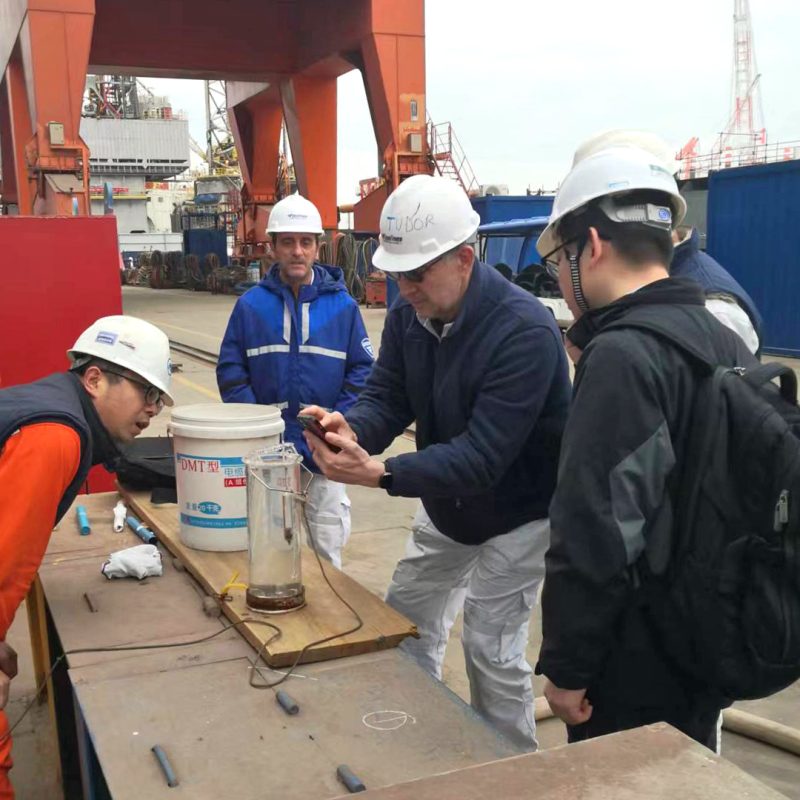
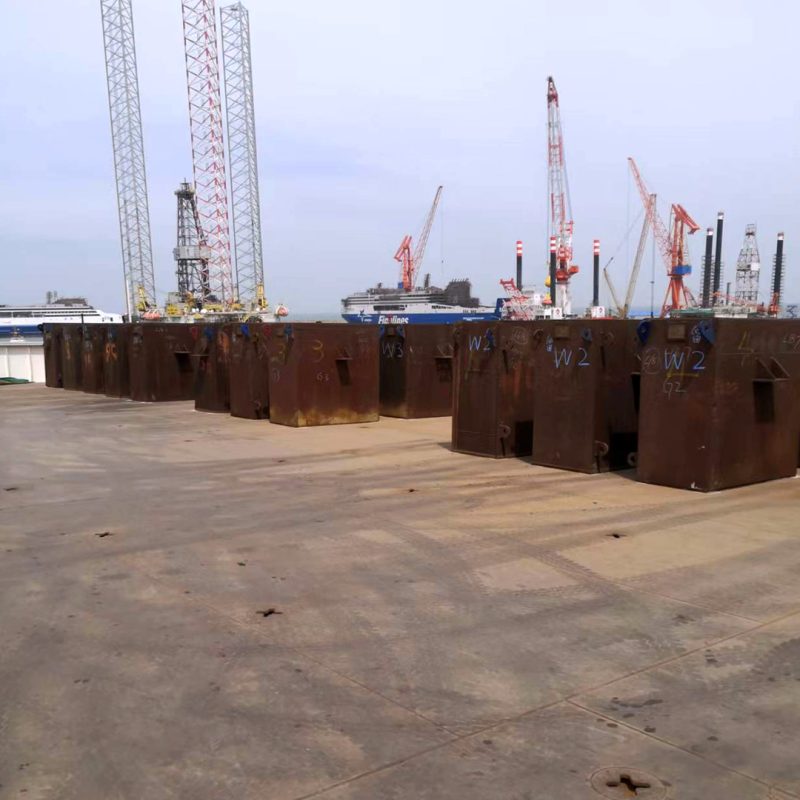
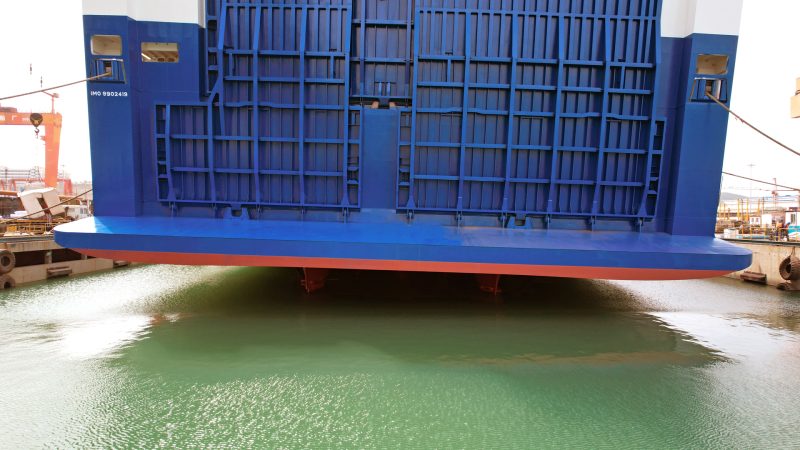
Once in traffic, information related to the center of gravity is especially needed by the ship’s chief mate, who calculates the stability of the ship before every sea voyage. Stability must always meet the criteria set for it – otherwise the ship may not leave the port. The software of the Finnish IT company Napa, run on a cargo computer, is used to calculate the stability.
Towards Sea Trials
The day of the inclining test on Finnsirius was successful. Next up is the finalization of the ship’s various control systems for sea trials. Meanwhile, the cabins, restaurants and other public spaces receive their finishing touch.
